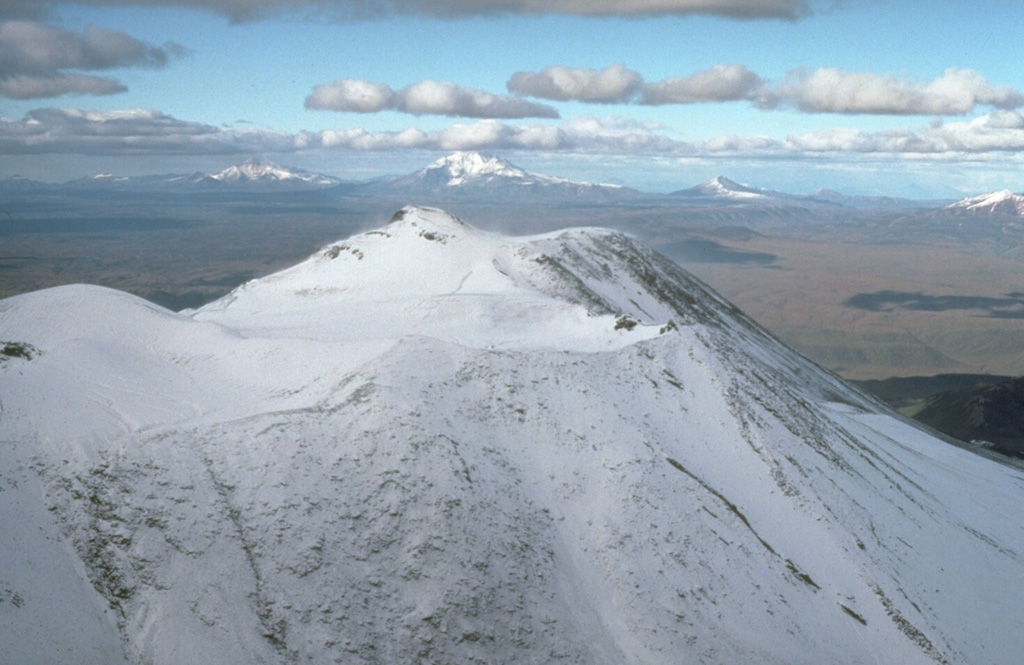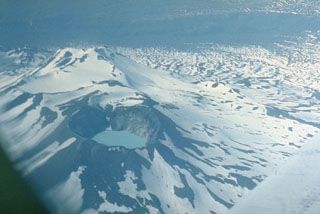Global Volcanism Program | Image GVP-02364

The summit of Paleo-Semyachik forms the highest point of the Maly Semyachik massif. Paleo-Semyachik, the first of three edifices constructed within two overlapping Pleistocene calderas, began forming about 20,000 years ago on the northern margin of the calderas. It produced lava flows that spread far beyond the caldera margins to the north and east before ceasing activity about 11,000 years ago. Activity then migrated to the SW, producing Meso-Semyachik volcano, whose flanks are in the foreground.
Photo by Dan Miller, 1990 (U.S. Geological Survey).
![]() This image is made available as a Public Domain Work, but proper attribution is appreciated.
This image is made available as a Public Domain Work, but proper attribution is appreciated.
Keywords: stratovolcano

Maly Semyachik
